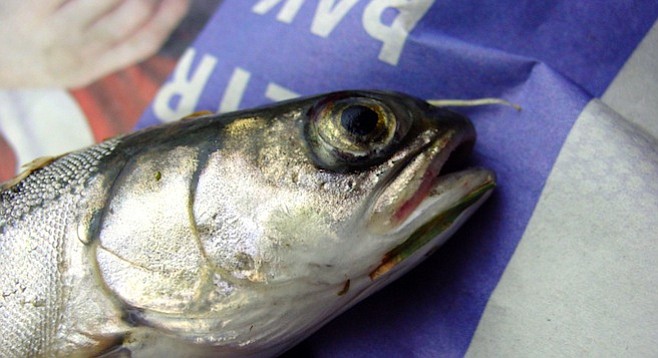 Facebook
Facebook
 X
X
 Instagram
Instagram
 TikTok
TikTok
 Youtube
Youtube

Ken Doctor, probably the reigning expert on the economics of the newspaper industry, said yesterday (May 19) in a story for capitalnewyork.com that Chicago's Tribune Co. wanted to buy the U-T in depressed 2008 for only $22 million. That's four times what Tribune Publishing paid recently. The 2008 deal never went through because Tribune Co. went bankrupt.
According to other sources, in the 2008 panic, the U-T was having trouble borrowing money to fix its problems, and the late David Copley had decided in late 2007 or early 2008 that he didn't want to own the paper any longer.
Doctor points out that when Copley sold the paper in 2009 to Platinum Equity for $35 to $50 million, "the billion-dollar property had lost 95 percent of its value." Indeed, David Copley had been listed as a billionaire by Forbes magazine, and that was based on the value of the paper, I determined at the time.
The stock-market value of newspaper chains had plunged by roughly the same magnitude at the market bottom.
In assessing newspaper profitability, Doctor uses EBITDA (earnings before interest, taxes, depreciation, and amortization). I call it operating cash flow, although some would say that is not accurate. Call it earnings with some accounting adjustments deleted. In any case, Doctor says the U-T now has EBITDA of $20 million to $24 million annually. If that's true, I have been wrong; I haven't thought the U-T was very profitable at all, even after layoffs under the Copley, Platinum Equity, and Manchester ownership. (The company's earnings have been kept secret, although the U-T has occasionally boasted of its profitability.)
Doctor is not bullish on the industry. There is one word for what has happened: "devaluation," says Doctor.


Ken Doctor, probably the reigning expert on the economics of the newspaper industry, said yesterday (May 19) in a story for capitalnewyork.com that Chicago's Tribune Co. wanted to buy the U-T in depressed 2008 for only $22 million. That's four times what Tribune Publishing paid recently. The 2008 deal never went through because Tribune Co. went bankrupt.
According to other sources, in the 2008 panic, the U-T was having trouble borrowing money to fix its problems, and the late David Copley had decided in late 2007 or early 2008 that he didn't want to own the paper any longer.
Doctor points out that when Copley sold the paper in 2009 to Platinum Equity for $35 to $50 million, "the billion-dollar property had lost 95 percent of its value." Indeed, David Copley had been listed as a billionaire by Forbes magazine, and that was based on the value of the paper, I determined at the time.
The stock-market value of newspaper chains had plunged by roughly the same magnitude at the market bottom.
In assessing newspaper profitability, Doctor uses EBITDA (earnings before interest, taxes, depreciation, and amortization). I call it operating cash flow, although some would say that is not accurate. Call it earnings with some accounting adjustments deleted. In any case, Doctor says the U-T now has EBITDA of $20 million to $24 million annually. If that's true, I have been wrong; I haven't thought the U-T was very profitable at all, even after layoffs under the Copley, Platinum Equity, and Manchester ownership. (The company's earnings have been kept secret, although the U-T has occasionally boasted of its profitability.)
Doctor is not bullish on the industry. There is one word for what has happened: "devaluation," says Doctor.
Comments